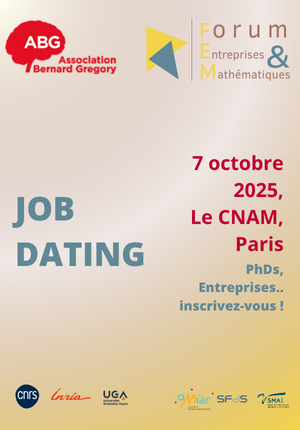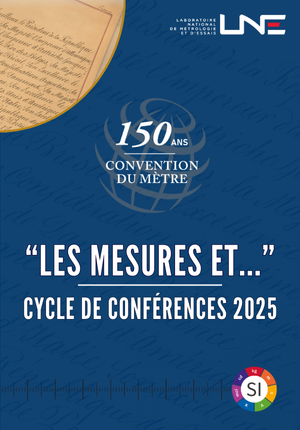Bipolar Membrane Electrodialysis for the Regeneration of Saline Solutions into Acids and Bases: Study of Transfer Mechanisms
| ABG-132226 | Thesis topic | |
| 2025-05-27 | Cifre |
- Process engineering
Topic description
Context and State of the Art
Bipolar Membrane Electrodialysis (BMED) process uses bipolar membranes (BMs) in various types of stacks. These membranes have the capacity, under suitable conditions, to dissociate water into H+ protons and OH- hydroxyls. They therefore allow the pH of solutions to be modified (acidification, alkalization) without the use of chemical inputs (acids or bases). BMED is therefore a particularly advantageous technology in the context of reducing the environmental impact of processes. Implemented in 3-compartment stacks (AEM/BM/CEM), it allows the regeneration of saline solutions into acids and bases. The interest generated by this technology has resulted in 3 review articles published since 2021 (Pârnamâe et al., 2021; Chen et al., 2022; Zhou et al., 2025). They have highlighted the advances, certain limitations, ways for improvement and prospects for the use of BMED. For example, the achievable concentration levels remain limited. “Co-ion leakage” is commonly cited to explain this limitation. This is in reality a co-transfer and not a leak in the strict sense. It results in a deterioration in performance, in terms of yield and quality (purity) of the products obtained. The origin of this phenomenon is still insufficiently identified (migration, diffusion, localization at the level of MEI or MB, etc.), so it remains difficult to limit its impact. Previous work has shown that the water transfer that accompanies the transfer of ions can also limit the achievable concentration level (Bailly et al., 2000; Borges et al., 2008; Han et al., 2015). A recent review (Zhou et al., 2025) further highlights the need to improve knowledge of multi-ionic transfers in the case of the treatment of complex solutions, in order to allow a broader development of the BMED process.
Objectives of the project
The objective of this project is to study the transfer phenomena involved in 3-compartment BMED systems (AEM/BM/CEM), used to produce or regenerate acid and base solutions from complex saline solutions, containing several mineral ions and/or organic impurities. A better understanding of these phenomena will make it possible to identify levers of action (properties of IEM or BM membranes, operating parameters, pretreatment of saline solutions) in order to improve the performance of the process (achievable concentration levels, product purity, etc.). Modelling will also be used based on transfer variables to predict the composition of the processed flows. This work will benefit from the approaches developed in previous studies (Roux de Balmann et al., 2002; Borges et al., 2008; Galier et al., 2013; Han et al., 2017).
Research Methodology
A bibliographic update will be carried out at the start of the project (publications and patents). This will help guide further work on the identified limitations. A report will be written (state of the art, study implementation).
A study will then be conducted at the laboratory scale. Experiments will be conducted with synthetic solutions of different compositions while varying the operating parameters (current density, concentrations, compositions). The transfer quantities will be determined to identify the contribution of the various phenomena involved (ionic transfer and water transfer across the different membranes of the stack, dissociation reaction at the BM level, etc.). Their impact on the performance of the BMED will be characterized (faradic efficiency, product purity). A model will be searched to describe the evolution of BMED performances as a function of the operating parameters. This investigation will be carried out for various stacks, consisting of different IEMs and BMs.
Scaling up will then be addressed through pilot-scale experiments. The transfer quantities will be determined and compared to those previously determined at the laboratory scale. This will highlight the scalable quantities, i.e. independent of the system size, and any performance discrepancies with the laboratory scale. The representativeness of the model developed at the laboratory scale will be assessed. Depending on the observed differences, an adaptation of the model will be considered.
Partners: The Chemical Engineering Laboratory, team led by Professor Sylvain Galier and CNRS Research Director Hélène Roux-de Balmann, specializing in separations using ion exchange membranes. EURODIA: one of the world's leading specialists in electrodialysis, holder of numerous patents, and leader in its application in several industrial fields.
Starting date
Funding category
Funding further details
Presentation of host institution and host laboratory
Partners: The Chemical Engineering Laboratory, team led by Professor Sylvain Galier and CNRS Research Director Hélène Roux-de Balmann, specializing in separations using ion exchange membranes. EURODIA: one of the world's leading specialists in electrodialysis, holder of numerous patents, and leader in its application in several industrial fields.
Website :
PhD title
Country where you obtained your PhD
Institution awarding doctoral degree
Graduate school
Candidate's profile
Master's degree or engineering degree in chemical engineering, process engineering, with research experience. Ability to synthesize, autonomy, rigor, and aptitude for teamwork. Writing skills, fluency in written and oral scientific English
Vous avez déjà un compte ?
Nouvel utilisateur ?
Get ABG’s monthly newsletters including news, job offers, grants & fellowships and a selection of relevant events…
Discover our members
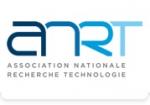 ANRT
ANRT  Généthon
Généthon  CESI
CESI  Institut Sup'biotech de Paris
Institut Sup'biotech de Paris  Groupe AFNOR - Association française de normalisation
Groupe AFNOR - Association française de normalisation  Laboratoire National de Métrologie et d'Essais - LNE
Laboratoire National de Métrologie et d'Essais - LNE  ONERA - The French Aerospace Lab
ONERA - The French Aerospace Lab  Aérocentre, Pôle d'excellence régional
Aérocentre, Pôle d'excellence régional  ASNR - Autorité de sûreté nucléaire et de radioprotection - Siège
ASNR - Autorité de sûreté nucléaire et de radioprotection - Siège  Tecknowmetrix
Tecknowmetrix  SUEZ
SUEZ  MabDesign
MabDesign 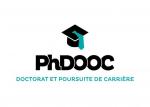 PhDOOC
PhDOOC  TotalEnergies
TotalEnergies 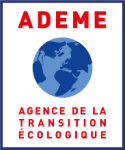 ADEME
ADEME  CASDEN
CASDEN  Ifremer
Ifremer  Nokia Bell Labs France
Nokia Bell Labs France  MabDesign
MabDesign

